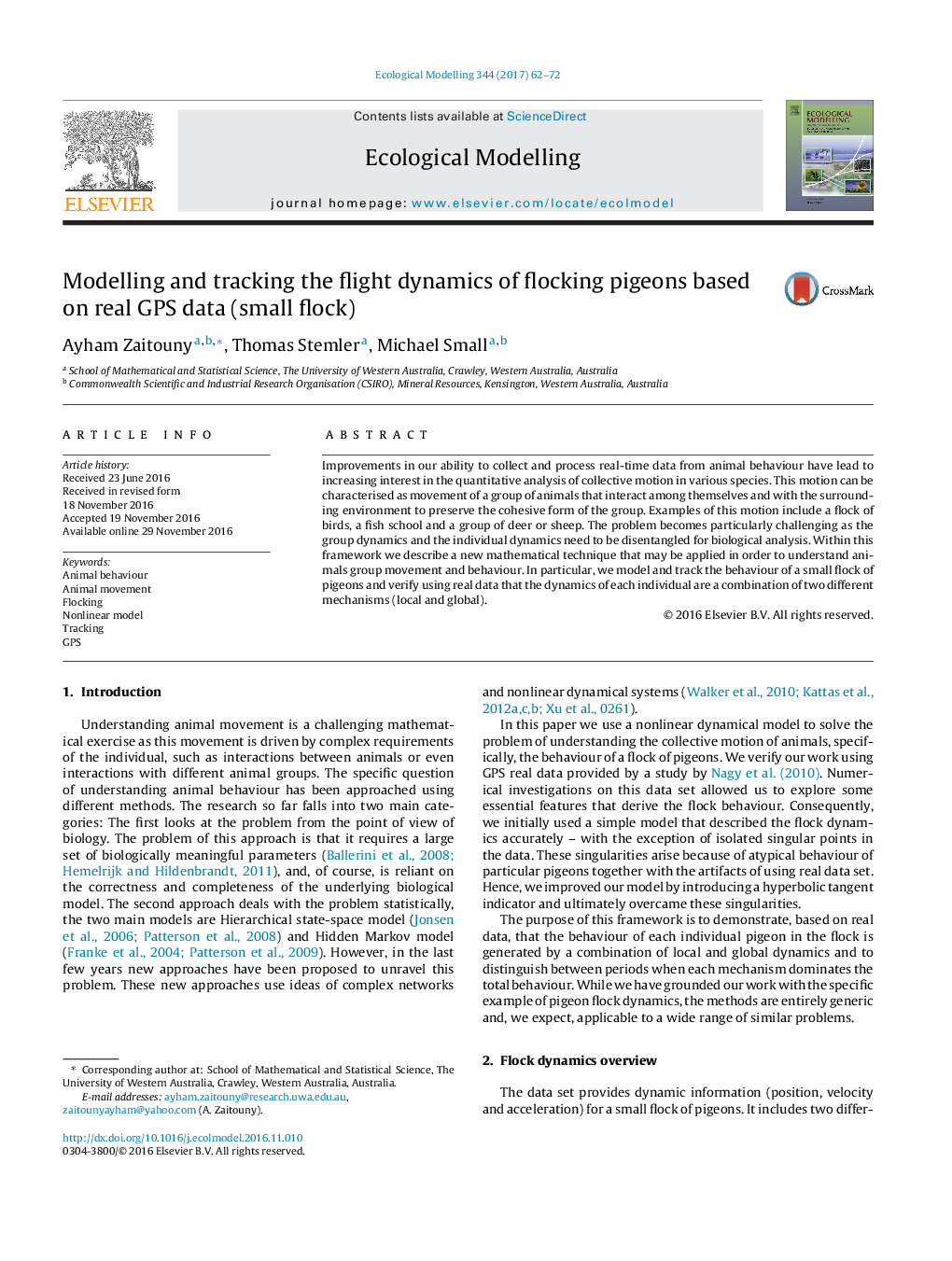| کد مقاله | کد نشریه | سال انتشار | مقاله انگلیسی | نسخه تمام متن |
|---|---|---|---|---|
| 5742280 | 1617403 | 2017 | 11 صفحه PDF | دانلود رایگان |

- A nonlinear model to track the behaviour of a small flock of pigeons using real data.
- We prove that the dynamics of a pigeon are composed of two mechanisms: global-local.
- One component dominates the total behaviour based on the distance from the mass centre.
Improvements in our ability to collect and process real-time data from animal behaviour have lead to increasing interest in the quantitative analysis of collective motion in various species. This motion can be characterised as movement of a group of animals that interact among themselves and with the surrounding environment to preserve the cohesive form of the group. Examples of this motion include a flock of birds, a fish school and a group of deer or sheep. The problem becomes particularly challenging as the group dynamics and the individual dynamics need to be disentangled for biological analysis. Within this framework we describe a new mathematical technique that may be applied in order to understand animals group movement and behaviour. In particular, we model and track the behaviour of a small flock of pigeons and verify using real data that the dynamics of each individual are a combination of two different mechanisms (local and global).
Journal: Ecological Modelling - Volume 344, 24 January 2017, Pages 62-72